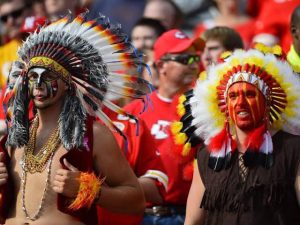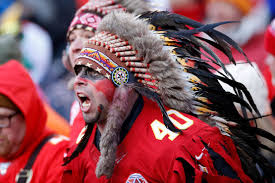The Kansas City Chiefs’ nickname has been a topic of controversy for many years, sparking a polarizing effect among their fanbase. The team’s use of Indigenous imagery and symbolism in their branding has been criticized for being insensitive and disrespectful. But where did the name “Chiefs” originate, and why is it so contentious?

The franchise was founded in 1960 as the Dallas Texans and was one of the American Football League’s charter members. In 1963, the team relocated to Kansas City and changed its name to the Kansas City Chiefs. The name “Chiefs” was chosen to honor then-Kansas City Mayor Harold Roe Bartle, who played a vital role in bringing the team to Kansas City. Bartle was known as “The Chief” for his involvement with the Boy Scouts and organizing the Native American-themed “Order of the Wigwam” during the 1920s.
However, the aspects tied to the Chief’s name that concern Indigenous Americans and many others include elements such as the tomahawk chop, the regular wearing of authentic headdresses by fans at games, and the team’s pregame rituals. The Chiefs feature a cheerleader riding a horse named Warpaint, who circles the field while hitting a large drum adorned with a Native American-style design featuring the team’s logo. These elements are seen as appropriation of Indigenous imagery and culture, which many find insensitive and disrespectful.
The controversy surrounding the team’s name and branding has been ongoing for years, with protests from Indigenous Americans increasing in the lead-up to Super Bowl LVII. The team’s use of Indigenous culture has been criticized for being reductionist and stereotypical, perpetuating negative attitudes towards Native Americans. As the Chiefs continue to celebrate their successes on the field, it’s essential to acknowledge the problematic history behind their name and to consider the impact it has on Indigenous communities.
Leave a Reply